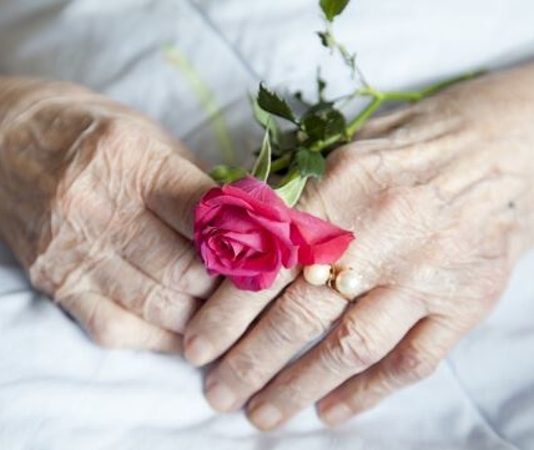The challenges of living with Parkinson’s disease require new habits and new priorities for the individual and their caregivers. While day-to-day living may not change right away, everyone involved in providing care should understand the progression of the disease. This allows everyone to be prepared to help their loved one make important, difficult decisions as things change.
Our Parkinson’s disease guide offers several tactics to maintain quality of life, assess symptoms, and adjust to new realities of life.
5 Facets of Living with Parkinson's
People who are living with Parkinson’s face good days, challenging episodes, and a lot of questions as their condition changes. Loop in a healthcare provider to learn what to expect and how to make positive changes in daily life.
1. Stay mobile
As symptoms worsen, staying physically active can be difficult. The key is to build mobility into your day by sticking with your favorite activities with comfort or safety modifications. Build light gardening, housework, and other physical chores into your task list as often as possible. Prioritize social exercise by walking with friends, family members, or caregivers for extra support. Don’t be embarrassed to use walking aids to get around; moving is moving!2.t facto
2. Adjust your driving
One of the most difficult factors of a Parkinson’s diagnosis is the diminishing of driving skills. Most of us rely on our cars to stay independent and connected. It’s important to note that most people with Parkinson’s can safely drive for years after a diagnosis. Make driving decisions based on your symptoms, the advice of your doctor, or the result of an elective driving assessment from your local Department of Motor Vehicles.
Your doctor may also make recommendations about your driving habits, such as limited duration, lower speeds, or sticking close to familiar neighborhoods.
If you do experience limited transportation options, consider using public transportation or asking family and friends to run errands with you. Local care providers, like Homewatch CareGivers, may also offer transportation assistance.
3. Make getting dressed easy
Tremors can make daily tasks like getting dressed frustrating. Patience and planning can make dressing and other tasks less stressful and ultimately easier. Give yourself plenty of time to get dressed and track if there are certain times of the morning when symptoms are less severe.
Make changes to your wardrobe that make dressing easier, such as:
- Wearing pants without buttons or zippers.
- Adding Velcro to existing clothes to replace buttons and retain your style.
- Choosing light, loose-fitting clothing when possible.
- Sitting while getting dressed and using a footstool to bring socks and shoes closer.
4. Prep your bathroom
Daily hygiene and grooming shouldn’t suffer with a diagnosis. One of the biggest barriers to living alone with Parkinson’s is the safety risk of getting into and out of the tub and completing other grooming activities. Upgrade your bathroom to be safer with a few new features:
- Install handrails in the shower or tub.
- Use a non-skid bath mat in the shower.
- Use a handheld showerhead.
- Keep the bathroom floor clear of loose mats, dirty towels, or clothing.
- Keep bathroom items easily accessible by installing shelves or adding a low cabinet.
- Bring your cell phone or medical alert device into the bathroom with you – every time.
- Save showering for when an in-home caregiver can assist you.
5. Adapt how you cook
Modifying your meal preparation and dining habits will keep you enjoying your favorite foods for a long time. As previously mentioned for getting dressed, patience and planning can make sitting down to eat much less stressful.
- Get out all your ingredients and utensils before you start cooking so you won’t have to make multiple trips around the kitchen.
- Get a pot stand to help with pouring and mixing.
- Consider using an electric knife to make cutting safer.
- Use swivel utensils to eat, and keep a set handy for dining out.
- Ask your caregiver to assist with meal preparation.
Living Alone with Parkinson’s
We all value our independence and self-reliance. Many people with Parkinson’s live happily and safely for years after diagnosis, but it does take an honest assessment of symptoms and safety over time. Make lifestyle and habit changes before symptoms mandate the adjustment, ask friends and family members for help, and find a local caregiver who can assist with more challenging tasks.
Face Parkinson’s with Confidence and Support
With dozens of locations nationwide and committed, trained caregivers ready to help, you don’t have to face Parkinson’s alone. Bring Homewatch CareGivers into your support network with in-home care, transportation, and other services designed to meet your needs today and tomorrow. Request a complimentary consultation online or call 888-404-5191 today.





